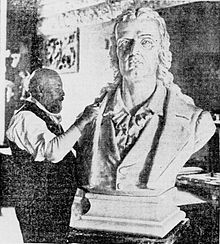
Thomas Ball was an American sculptor and musician. His work has had a marked influence on monumental art in the United States, especially in New England.

Daniel Chester French was an American sculptor of the late nineteenth and early twentieth centuries. He is best known for his 1874 sculpture The Minute Man in Concord, Massachusetts, and his 1920 monumental statue of Abraham Lincoln in the Lincoln Memorial in Washington, D.C.

Edward Clark Potter was an American sculptor best known for his equestrian and animal statues. His most famous works are the marble lions, nicknamed Patience and Fortitude, in front of the New York Public Library Main Branch
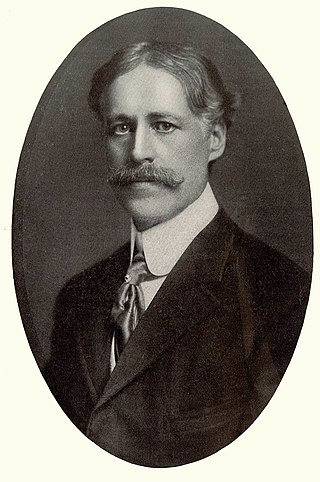
William Ordway Partridge was an American sculptor, teacher and author. Among his best-known works are the Shakespeare Monument in Chicago, the equestrian statue of General Grant in Brooklyn, the Pietà at St. Patrick's Cathedral in Manhattan, and the Pocahontas statue in Jamestown, Virginia.
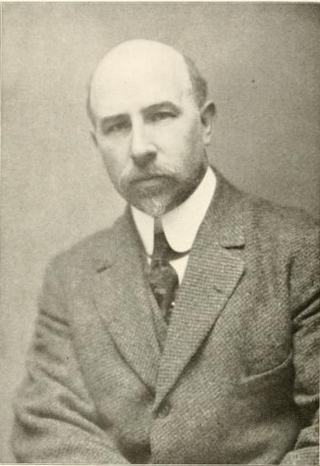
Henry Augustus Lukeman was an American sculptor, specializing in historical monuments. Noted among his works are the World War I monument in Prospect Park, Brooklyn, the Kit Carson Monument in Trinidad, Colorado and the Stone Mountain Confederate Memorial in Georgia.

John Quincy Adams Ward was an American sculptor, whose most familiar work is his larger than life-size standing statue of George Washington on the steps of Federal Hall National Memorial in New York City.

William Rudolf O'Donovan was an American sculptor.

Charles Henry Niehaus was an American sculptor.
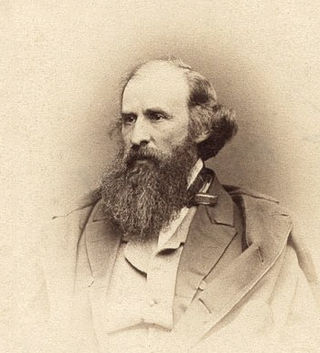
Henry Kirke Brown was an American sculptor.

Edward Brush Fowler was an officer in the Union Army during the American Civil War. He is best known for his command of the 14th Brooklyn Regiment and a demi-brigade during the Battle of Gettysburg in July 1863.
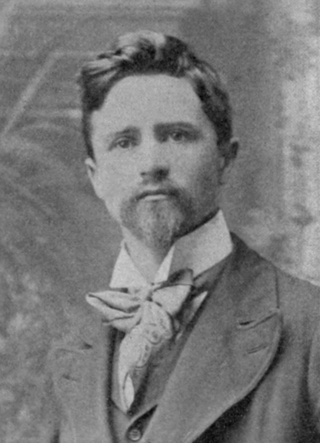
Sigvald Asbjørnsen was a Norwegian-born American sculptor.

Edmond Thomas Quinn was an American sculptor and painter. He is best known for his bronze statue of Edwin Booth as Hamlet, which stands at the center of Gramercy Park in New York City. His larger-than-lifesize bronze bust of Victor Herbert stands near The Pond in Central Park, New York City.

Johannes Sophus Gelert (1852–1923) was a Danish-born sculptor, who came to the United States in 1887 and during a span of more than thirty years produced numerous works of civic art in the Midwest and on the East Coast.

Ludwig van Beethoven is a series of sculptures of Ludwig van Beethoven by German-American sculptor Henry Baerer. Versions are displayed in Central Park and Prospect Park in New York City, as well as Golden Gate Park in San Francisco. The sculpture in Central Park was dedicated on July 22, 1884. It includes two bronze statues, including a bust of Beethoven and an allegorical female figure on a polished Barre Granite pedestal.

The bust of Edward Snowden, called Prison Ship Martyrs' Monument 2.0 by its creators, was an ephemeral, illegally installed public sculpture of Edward Snowden, an American whistleblower who leaked classified information from the National Security Agency (NSA) and was charged with federal crimes as a result. The bronze-like bust was placed in Fort Greene Park in Fort Greene, Brooklyn, New York City, on April 6, 2015. This sparked outrage by the Society of Old Brooklynites. It was attached to a Doric column on the perimeter of the park's Prison Ship Martyrs' Monument, a memorial and crypt which honors and inters the more than 11,500 American prisoners of war who died in the American Revolution while housed on British prison ships.

The Concert Grove is a section of Prospect Park, Brooklyn, New York City, that historically functioned as an outdoor music venue. It still serves as a sculpture garden lined with busts of musical figures, largely put up by German American Sängerfest participants and other cultural groups. The Concert Grove also includes the Concert Grove Pavilion, formerly known as the Oriental Pavilion, and adjoins a Lincoln sculpture facing the lake.
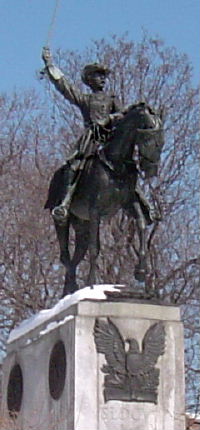
The equestrian statue of Henry Warner Slocum is a monumental statue in Brooklyn's Grand Army Plaza, in New York City. The equestrian statue, designed by sculptor Frederick William MacMonnies, was dedicated in 1905 in honor of Henry Warner Slocum, who served as a general in the Union Army during the American Civil War and later as a U.S. Representative from the state of New York.

The Lafayette Memorial is a public memorial located in Brooklyn's Prospect Park in New York City. The memorial, designed by sculptor Daniel Chester French and architect Henry Bacon, was dedicated in 1917 and consists of a bas-relief of Gilbert du Motier, Marquis de Lafayette alongside a groom and a horse.

J.S.T. Stranahan is a bronze statue in Brooklyn's Prospect Park in New York City. Designed by Frederick William MacMonnies and erected in 1891 near the park's entrance at Grand Army Plaza, it honors James S. T. Stranahan, a businessman from Brooklyn who served on the city's park commission and was instrumental in Prospect Park's creation. The statue is considered one of MacMonnies' finest works and was praised for its realism. An inscription on the pedestal of the statue includes the Latin phrase LECTOR SI MONUMENTUM REQUIRIS CIRCUMSPICE which also marks the tomb of Christopher Wren.
